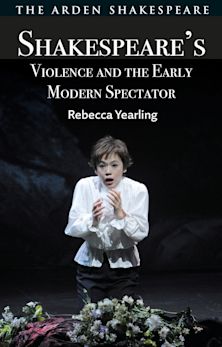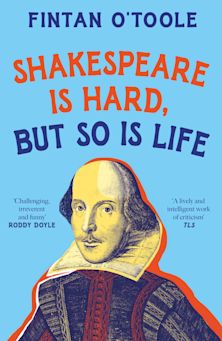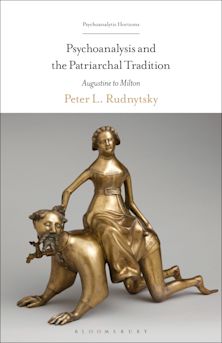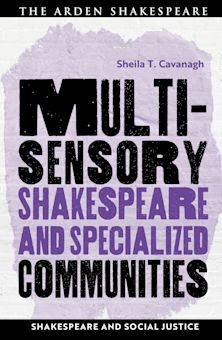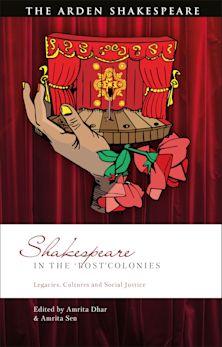- Home
- ACADEMIC
- Literary Studies
- Shakespeare Studies
- Reading What's There
Reading What's There
Essays on Shakespeare in Honor of Stephen Booth
Michael J. Collins (Anthology Editor) , Thomas L. Berger (Contributor) , Ralph Alan Cohen (Contributor) , Laurie Ellinghausen (Contributor) , Michael Ellis-Tolaydo (Contributor) , Brett Gamboa (Contributor) , Michael Goldman (Contributor) , Jay L. Halio (Contributor) , James E. Hirsh (Contributor) , Margaret Maurer (Contributor) , Nicholas Nace (Contributor) , Louisa Newlin (Contributor) , Mark Womack (Contributor)
Reading What's There
Essays on Shakespeare in Honor of Stephen Booth
Michael J. Collins (Anthology Editor) , Thomas L. Berger (Contributor) , Ralph Alan Cohen (Contributor) , Laurie Ellinghausen (Contributor) , Michael Ellis-Tolaydo (Contributor) , Brett Gamboa (Contributor) , Michael Goldman (Contributor) , Jay L. Halio (Contributor) , James E. Hirsh (Contributor) , Margaret Maurer (Contributor) , Nicholas Nace (Contributor) , Louisa Newlin (Contributor) , Mark Womack (Contributor)
This product is usually dispatched within 2-4 weeks
- Delivery and returns info
-
Flat rate of $10.00 for shipping anywhere in Australia
You must sign in to add this item to your wishlist. Please sign in or create an account
Description
Stephen Booth has, for over forty years, proposed a distinct understanding of how Shakespeare’s plays and poems work upon us and a unique and rigorous way of reading them. The essays here reflect his insights and method and are meant both to recognize his monumental achievements as a critic and to suggest the enduring value of his work to Shakespeare scholarship.
The first chapter explains both the method and the strengths of Booth’s approach to Shakespeare. The next two—on Romeo and Juliet and The Rape of Lucrece—demonstrate Booth’s way of reading Shakespeare. The following four chapters develop Booth’s contention that Shakespeare often sets “audiences to watch—or, rather, to try to watch—a play other than the one he shows them.” The next two chapters look at textual problems from Booth’s perspective and explore the challenges editors face in their attempts to establish authentic texts for modern readers. The last three chapters focus on teaching and include a description of Stephen Booth’s teaching practices and his own renown explanation, through a commentary on Philip D. Eastman’s Go, Dog. Go!, of the way poetry works upon its readers and the reasons they value it highly. The book concludes with a bibliography of Stephen Booth’s work.
Table of Contents
Michael J. Collins
The Interpretive Fallacy
Mark Womack
What Passed wasn’t Prologued: False Advertising in Romeo and Juliet
Brett Gamboa
Mutatis Non Mutandis: The Reading Mind and Its Autocorrect Function in The Rape of Lucrece
Nicholas Nace
On the Final Songs in Love’s Labors Lost
Michael Goldman
The Second Part of Henry IV: Expectation and Disappointment
James Hirsh
Naughty Orators: the Knotty Discourse of All's Well that Ends Well
Ralph Alan Cohen
The Tragic Dimension in Shakespeare’s Comedies
Jay L. Halio
Leonato and Beatrice at 5.4.97 of Much Ado About Nothing
Margaret C. Maurer
Mistakes were Made: Errata in Early Modern English Playbooks
Thomas Berger
Teaching Shakespeare’s Sonnets the Boothian Way
Laurie Ellinghausen
Taught by a Teacher to Teach: A Personal History or What I Learned from Stephen Booth
Louisa Newlin
Go, Dog. Go!: A Lesson on the Pleasures of Language
Michael Ellis-Tolaydo
A Bibliography of the Work of Stephen Booth
Brett Gamboa and Michael J. Collins
About the Contributors
Product details
| Published | 05 Dec 2014 |
|---|---|
| Format | Hardback |
| Edition | 1st |
| Extent | 188 |
| ISBN | 9781611495072 |
| Imprint | University of Delaware Press |
| Illustrations | 33 Color Photos |
| Dimensions | 237 x 161 mm |
| Publisher | Bloomsbury Publishing |















